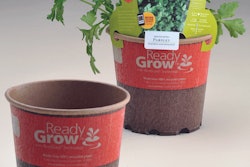www.sustainablepackagingsymposium.com1. The most resource-efficient package will win. “As we move into this world of greater competition and scarcity for energy and materials, the most carbon- and water-efficient packages will be the winners of the marketplace,” he said. “Carbon and water equate to money.”
2. Functionality will be king. “In the future, packaging functionality will be even that much more critical,” he said, noting that if packaging is 10% of a product’s footprint, and the other 90% is the product itself, a failed package will result in a loss of 100% of the energy and materials that went into the product.
3. Keeping the molecule in play will gain momentum. This prediction, one of the most quoted statements at this year’s symposium, refers to the need for packagers to become more creative and proactive in their reuse of materials.
4. Reusables will gain marketshare where it makes systems sense. “It’s a version of keeping the molecules in play,” he explained. “We are going to see reuse of boxes and bottles and all sorts of things, where distribution channels and supply chains allow.”
5. Bio-based packaging materials will grow, but not necessarily biodegradable. He predicts that, as oil and gas become scarcer and more costly, innovations in packaging will thrive, including the use of bioplastics. He believes that traditional polymers, such as polyethylene, PET, and polypropylene produced using renewable resources will take the lead over new plastic alternatives such as polylactic acid (PLA) and polyhydroxyalkanoate (PHA).
6. Transparency will drive societal full-cycle thinking about packages. In the future, packagers are going to need to understand the full life cycle of their materials and be able to convey that information.
7. Life-cycle data will increasingly drive material decision-making. This data will help packagers understand the resources, their societal implications, the value chain, end-of-life options, and other issues related to selecting a packaging material. “It helps us understand frankly the function and the broader systems,” Kingsbury concluded.



























